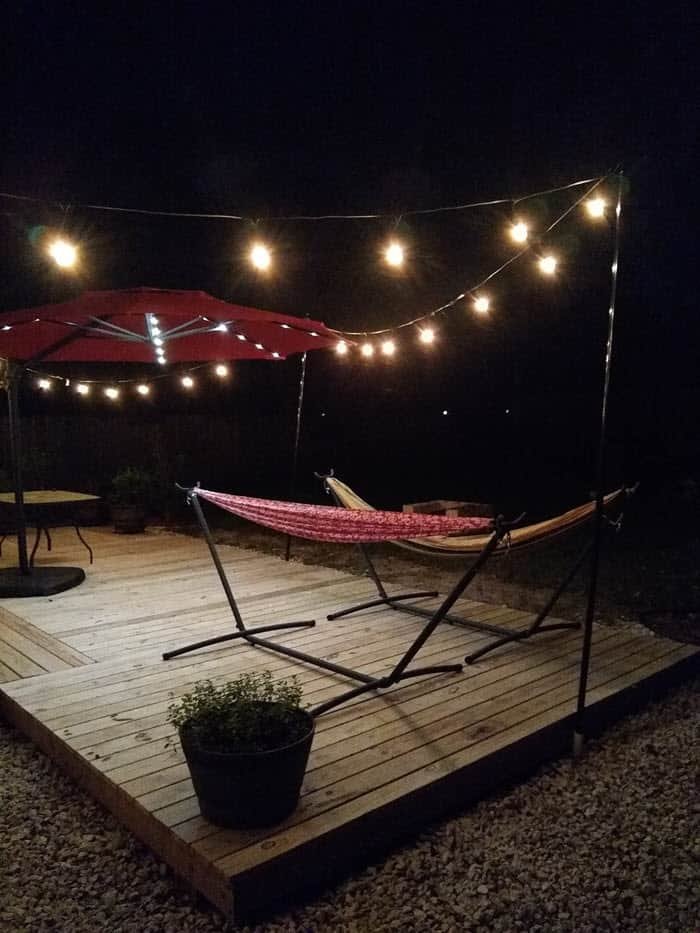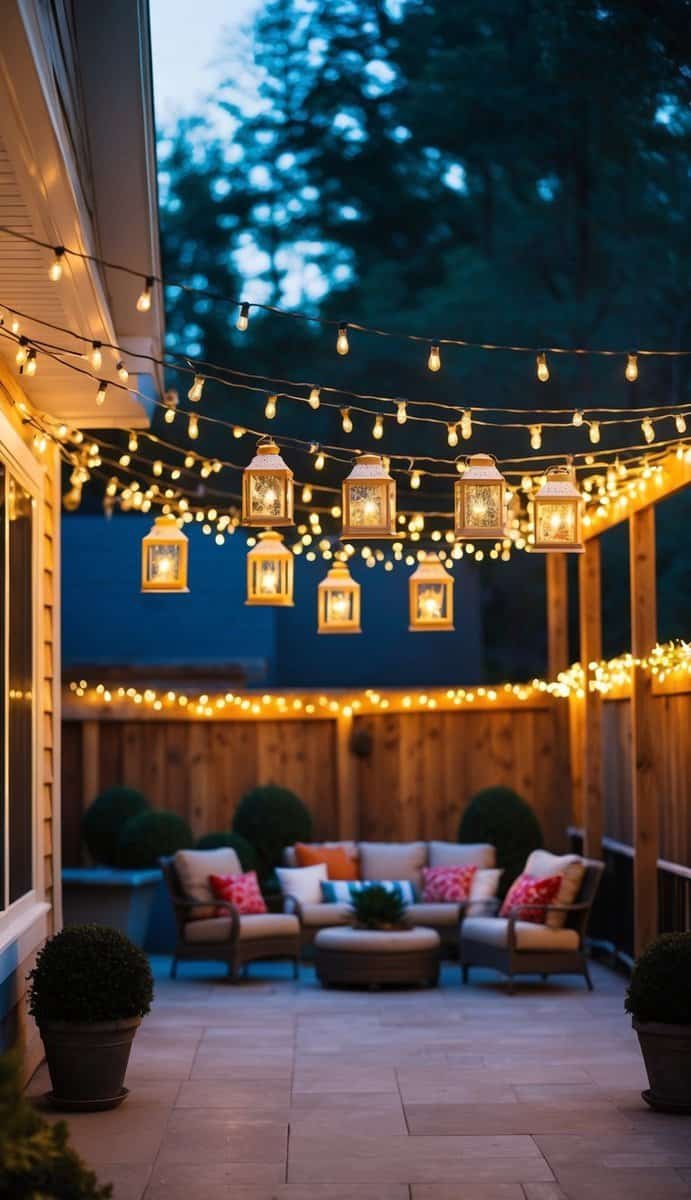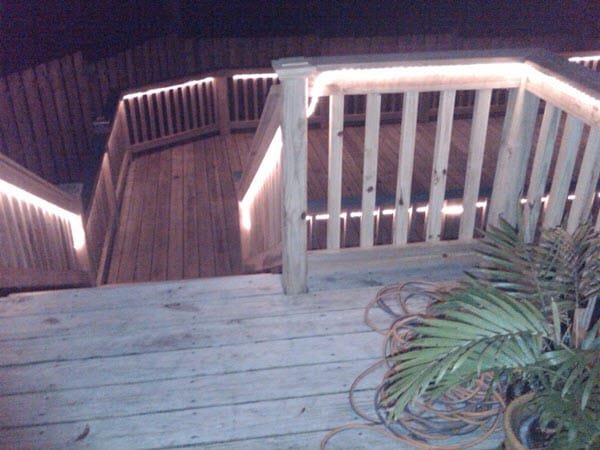How To Install Outdoor Floodlights

Floodlights have become a regular item for many homeowners, whether that be for safety, practical lighting, or simply displaying the exterior of your house at night.
Floodlights used to require professional installation, but now can be a fairly simple DIY project. The installation process is quick and simple, but how do you do it?
In this article, you will learn the easy steps to take when installing outdoor floodlights. While it is a simple process, you must make sure that you are installing your floodlights correctly.
Table of Contents
Choose Where You Will Install Your Flood Lights
As mentioned before, floodlights may be used for different circumstances, so the location at which you install them must be taken into account. It is recommended to install your floodlights near a power source whose circuit you can easily access for connecting the lights.
If you have a spot in mind, but there are no electrical outlets, an electrician can install one for you, and then you can move forward with this project.
| Location | Benefits |
| Above the front door | Keep the entrance well lit for visitorsEnhanced visibility for safety |
| Above the garage | Better visibility from inside a vehicle |
| Above windows | Improved aesthetic with exterior lighting |
| Outside any additional buildings (barns, garages, workshops) | Added security |
Despite the general area you decide to install your floodlights, make sure that the installation’s exact site is high enough for the floodlights to cover as much ground as possible.
Floodlights are made to provide intense light, so installing them high up will not make their function any less noticeable. The higher up a floodlight is installed, the better it will work. If you’re wanting to add some lights to the side of your house, we go over how you can attach lights to vinyl sliding here.
Turn Your Power Off
Before actually beginning the installation process, it is extremely important to turn your power off. Any exposed wires with current running through them during installation can pose a major risk of injury. Not following specific, simple safety instructions will likely end up causing consequences.
It may not be necessary to turn off all power inside and outside of your house. Go to your circuit breaker box and flip off the circuit you will be dealing with during installation.
Of course, if you want to ensure maximum safety, and since this process does not take long, it could not hurt to shut off your breaker box’s main switch. The more cautionary measures, the better.
If you’re working in a home with older wiring, turning off all of the power is the best way to go. It will only be for a short time, and it’s worth the extra precaution.
Regardless of what you choose to do, it is suggested to test the circuit with which you will be working. You can make sure the circuit does not have an electrical current running through it if you have a circuit tester handy. Be sure to also check out our article on how you can power your Christmas lights.
Install Your Flood Lights
Next comes the main event: the actual installation of your floodlights. This is probably the most difficult part of the process, but if you follow the instructions carefully, it should be no problem. There are two common circumstances you will likely deal with during the actual installation process:
- Installing floodlights where a previous light fixture has been.
- Installing floodlights in a new area.
If interesting in hanging string lights, we have an article that goes over a few different ways on how you can achieve that even without using trees.
Replacing an Old Fixture with New Flood Lights
If you are switching out two light fixtures, the installation process is a bit more simple. Following these steps will help you get the job done:
- First, you are going to need to remove the old light fixture. After you have made sure that the circuit’s power has been switched off, unscrew the light bulbs in the fixture you are removing.
- Carefully placing them aside, the next step is to unscrew the entire light fixture, disconnect it from the wall, and carefully remove the wires attached to it.
- If you are positive that the circuit is off, you can continue to the next part. But again, since safety is the top priority here, it would not hurt to double-check with a circuit tester if you have one in your possession.
- Once the whole previous light fixture has been removed, the mounting strap of your new floodlight fixture is in its place. Before screwing in the fixture itself, however, you must first connect the wires.
- The colors of the wires of the circuit in the wall should match the wires’ colors coming from your new flood light fixture.
- The easiest way to connect the circuit’s wires and the floodlight fixture is by twisting their ends together.
- After that, secure the bond with electrical tape, wire connectors, or both. It is recommended to use as much material as possible to secure any electrical wire connection.
- Now that the wires are connected, the rest of the installation process is quite easy; screw in the floodlight fixture to its mounting strap and then screw the light bulbs into their reserved locations. After powering the circuit back on, you should have no trouble with your new floodlights.
Installing Flood Lights In A New Area
Installing outdoor floodlights in a new area is similar to the process of replacing an old fixture, but there are a few minor differences that might make the process take a bit longer.
- After finding where your floodlights will go, drill holes in your house for which you will install the floodlight fixture with screws.
- Find a circuit and junction box close to your installation area because the wire connecting process might take the most time.
- As you probably realized, if you are replacing an old fixture, the wires will be right in front of you when you remove that fixture.
- If you have chosen a brand new spot for your new flood light fixture, you will have to maneuver the wires to a nearby junction box that can connect to your circuit breaker.
- It is highly recommended that you use fish tape during this process for your safety and convenience. A fish tape is a mechanism in which you can “fish” the wire to connect to the junction box more easily.
- Once you have found the junction box, the wiring process is the same for the previous scenario. And once you have your fixture all wired up, you attach the mount and screw in the fixture and light bulbs.
Test Your Flood Lights
You will want to make sure your floodlights work; otherwise, what was all that professionally executed electrical work worth the effort? After installing your floodlights, go back to your circuit breaker box and flip the switch to the circuit back on. Then, flip your floodlight switch on, and confirm that your floodlights are working properly.
If you see no problem with your set up, you are good to go, and you can enjoy your floodlights for whatever purpose they might serve. If you do see a problem, such as your floodlights not turning on at all, your best bet might be to call an actual professional electrician who will solve the situation.
Takeaway
Installing floodlights is a great safety feature for any home or building. Thankfully, it’s something you can do on your own, without the help of a professional.
The steps to install outdoor flood lights are quite simple. All you need is:
- Basic electrical wiring knowledge
- A clear idea of where the lights are going
- The necessary tools, and of course, the floodlights
Following the steps above, along with additional instructions from the manufacturer of your specific flood light fixture, will make for an easy install. Also, remember that contacting a professional is not a bad idea if you’re unsure of any part of the installation.
After reading the how-to instructions for installing floodlights on your own, and you’re just not sure if the job is in your wheelhouse, getting the help of someone who knows what they are doing can be very beneficial.
Once you have your lights up, you may have issues with birds and want to know how to keep the birds off your outdoor lights or how to reset outdoor motion sensor on your lights.





